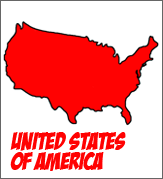I’m partial to a rye Manhattan, and especially partial to one made with high-proof rye. So when shopping for a new bottle to replace the latest dead soldier in my cabinet, James E. Pepper 1776 caught my eye. $37 straight rye bottled at 58.6% ABV? Sounds like it would be perfect for a Manhattan! I picked it up.
Before we continue, I’d like to make something clear. I review whiskies based on their sippability (nope, that’s not a word) NOT their mixological potential (also not a word). My philosophy is that if I don’t like it straight up, it’s not going to make a worthy cocktail. Note that the converse is not true; a whisky that is good neat does not always make a good cocktail. Ever had a Laphroaig Rob Roy? Yuck. Further, just because a whisky tastes good does not mean I’m willing to put it in a cocktail. Generally, my bottles costing in excess of $50 are reserved for sipping. This is not some kind of over-arching Law of Whisky that Ye Shall Not Break… I just don’t like the idea of pouring expensive whisky in with other ingredients over ice, thus muddling and masking the very individuality that I paid for in the first place. Put another way, the difference between a $15 whisky and a $40 whisky in a cocktail can be huge. The difference between a $40 whisky and an $80 whisky in a cocktail is usually minor, at best. So why waste the $80 stuff?
James E. Pepper, a historic brand purportedly established in 1780 (NOT in 1776) but mothballed in 1958, was distilled at several sites in Kentucky including the now-abandoned James E. Pepper distillery in Lexington, KY. In 2008 the rights to the brand were purchased by the Georgetown Trading Co., and re-launched using sourced whisky from various distilleries. The rye bottlings, like many modern rye whiskies, are made at LDI in Indiana (now called MGP). The bourbon bottlings were previously contracted out of the Corsair distillery, but are now all MGP as well. The Georgetown Trading Co. announced in 2016 that the historic James E. Pepper distillery in Lexington would be renovated and reopened as a craft distillery and museum, tentatively scheduled to open in 2017. (Update: It opened in December of 2017.)
The brand makes several bourbons and three ryes: a 100 proof, this barrel proof, and a 15 year-old. Bottled at 58.6% ABV and aged “over 2 years” (which one can assume means under 3 years), the barrel proof rye retails for around $40 a bottle, which is not out of line for a young cask-strength rye. The barrel proof rye is the exact same whisky as the 100-proof, except that it is bottled at cask strength. Both come from a mashbill of 90% rye, and both are bottled without chill-filtration.
Nose: A blast of rye favorites: cinnamon, clove, stale nutmeg, plus a hint of cherry and a wave of marzipan. Potent and concentrated, and not suggestive of young under-matured rye.
Palate: Medium-bodied. Dry and super hot (duh). Dusty spices and bright-red maraschino cherries. Spiced cider and baked apples (very reminiscent, in fact, of Applejack). Tobacco and black pepper.
Finish: Medium-long. Apples again, and the requisite spices, plus more black pepper. Drying, and nicely oaky. Fades with some charcoal and without bitterness, but it’s so dry that it seems a little unbalanced.
With Water: Several drops of water have little effect on the aroma. They also fail to dampen the tongue burn. A much larger splash does something interesting: a huge dose of cherry pie filling on the nose (almost sweet!), and a much softer grain-forward palate with more bakery (as opposed to dry spice cabinet) spices. The finish also has a little caramel on it. If you find this to be one-dimensional or overly dry at full strength, try proofing it down to 45% or so. It’s worth the effort.
Overall: This is exactly what I’d expect from a $40 mass-produced factory rye at cask strength: One-dimensional high-rye notes of spices, without a lot of sweetness or complexity to back it up. I tried it in a Manhattan and was mildly disappointed. The barrel proof kicks up a potent cocktail (which I like), but the dryness and peppery-ness fail to balance with the vermouth, and the spice notes are lost, or become dusty. The result is a dry, one-dimensional cocktail with power but no finesse.
For an interesting comparison, read my review of the 100-proof rye, which is only different in ABV (by 8.6%) and price.









